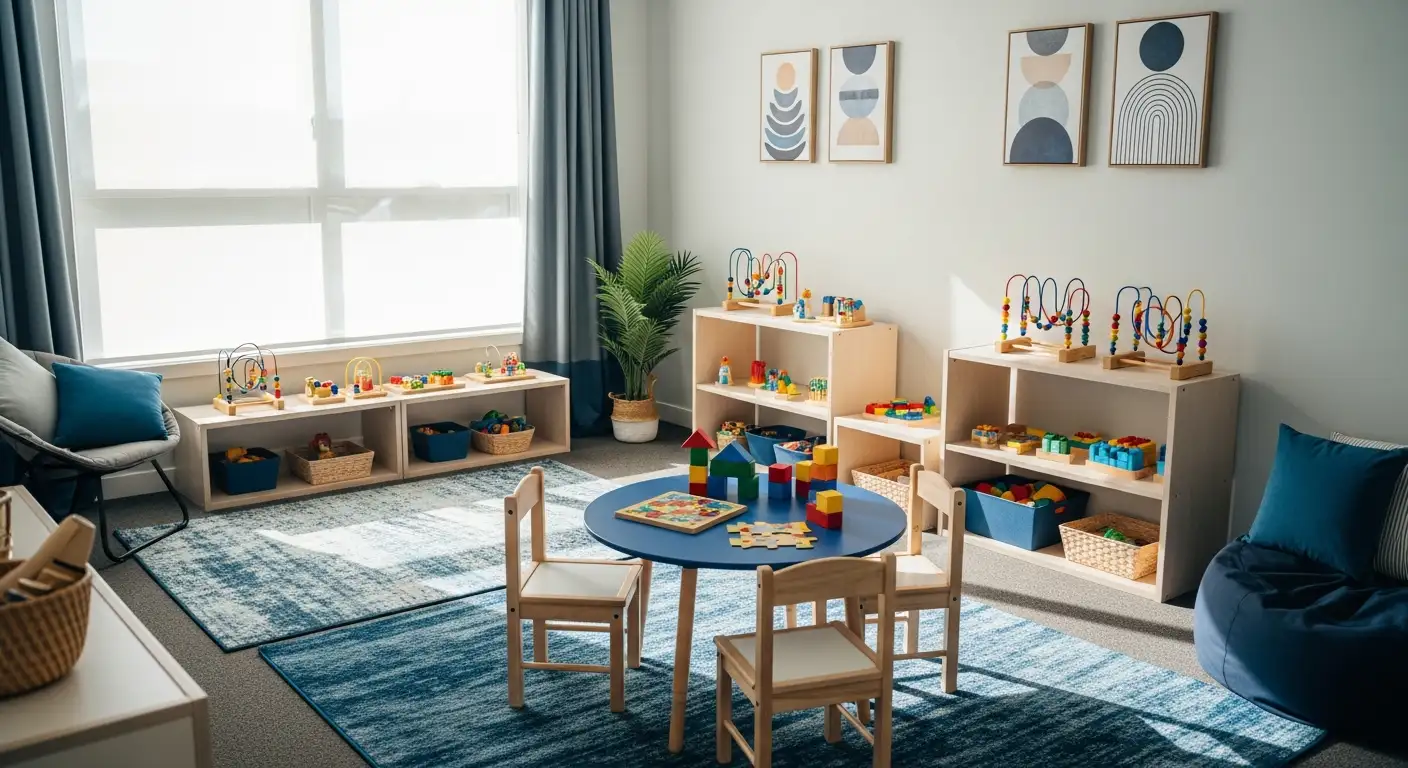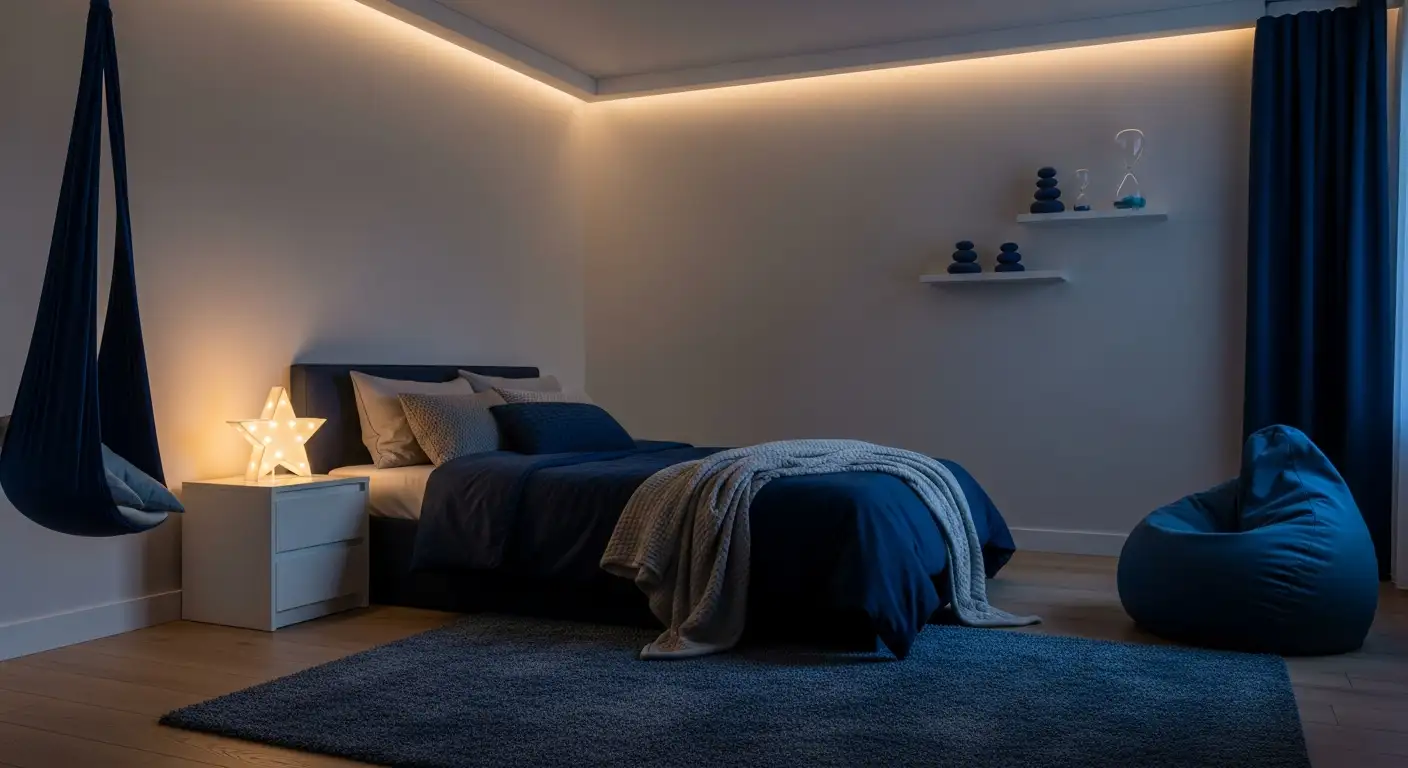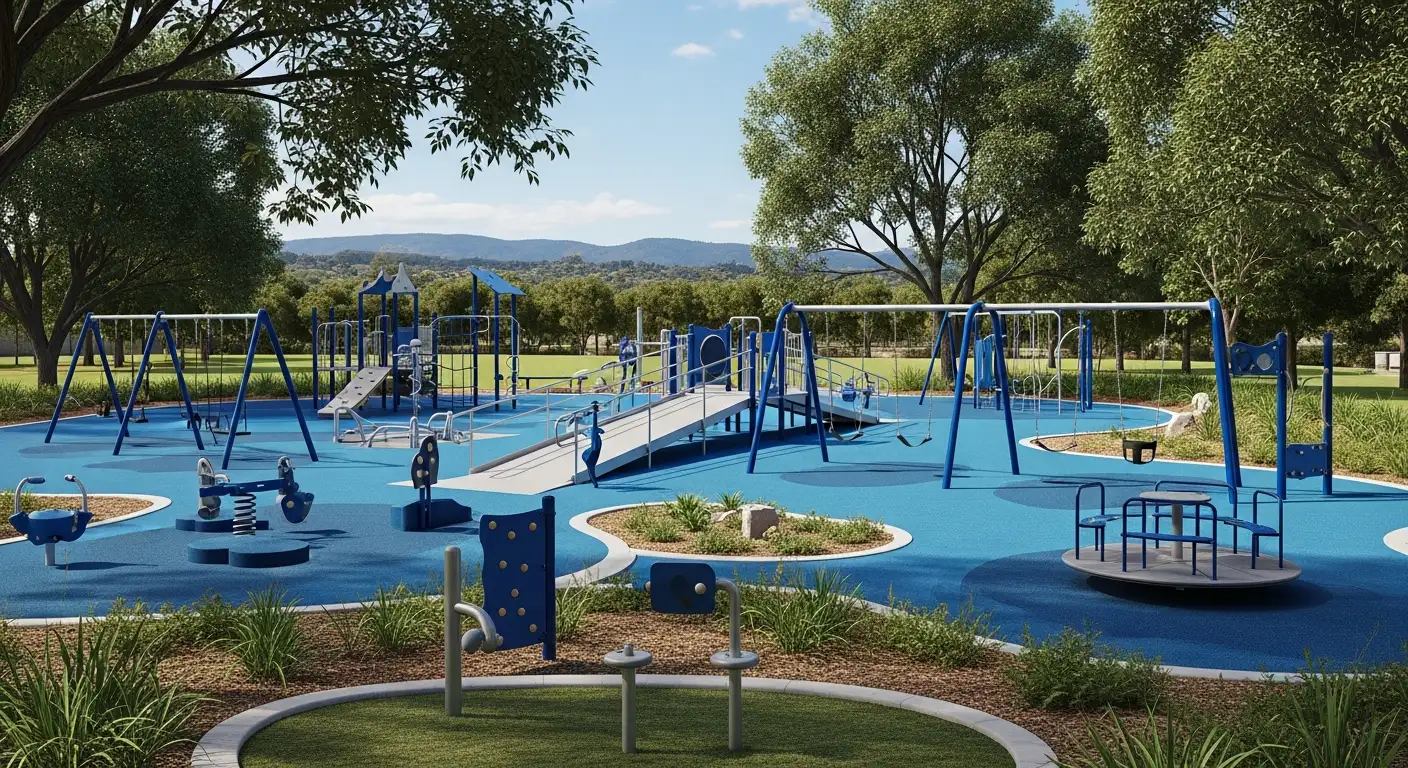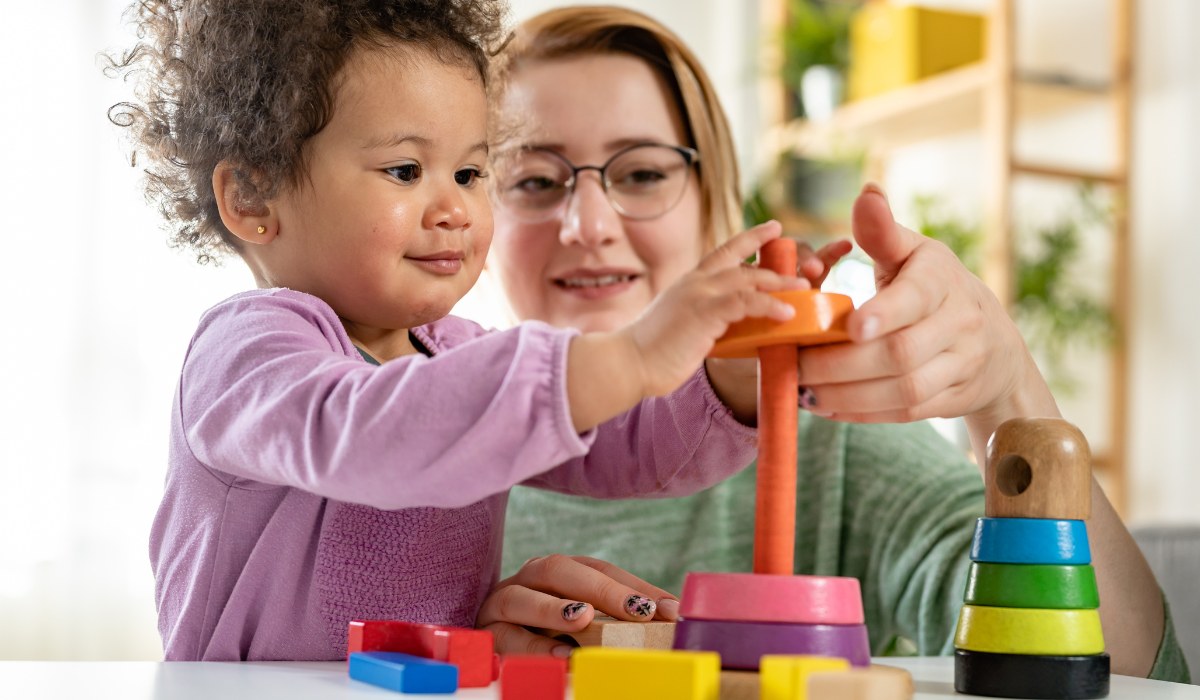Autism Diagnosis Observation Schedule (ADOS): What to Expect
Discover what happens during an ADOS assessment for autism, how it helps with diagnosis, and what parents can expect throughout the observation process.

Key Points:
- The Autism Diagnostic Observation Schedule (ADOS) is a structured, play-based assessment used to help diagnose autism.
- It measures communication, social interaction, and play behaviors through observation.
- Parents can expect a calm, child-centered process that provides valuable insight into their child’s developmental profile.
Understanding what happens during an autism assessment can ease much of the uncertainty parents feel. One of the most trusted tools professionals use is the Autism Diagnostic Observation Schedule (ADOS). This evaluation helps clinicians observe how a child communicates, plays, and interacts in real-time — without relying solely on questionnaires or reports.
If your child has been referred for an ADOS evaluation, you’re likely wondering what to expect, what the process involves, and how it fits into the overall autism diagnosis journey. Below, we’ll walk you through every step — from how ADOS works to how its results help guide interventions like Applied Behavior Analysis (ABA) therapy.
What is the Autism Diagnostic Observation Schedule (ADOS)?
The ADOS is a standardized assessment used to identify behaviors associated with Autism Spectrum Disorder (ASD). Unlike paper-based tests, it focuses on direct observation — meaning the clinician interacts with your child to see how they respond in various social and play situations.
Each session is designed to feel natural, often like playtime or casual conversation, depending on your child’s age and language skills. The activities might look simple — building with blocks, looking at pictures, or talking about daily experiences — but each one helps measure key areas like:
- Social reciprocity (how your child responds to and initiates interaction)
- Communication skills (both verbal and nonverbal)
- Imagination and creativity in play
- Use of gestures, eye contact, and facial expressions
ADOS isn’t a single test that says “yes” or “no” to autism. Instead, it provides structured behavioral data that clinicians combine with other tools such as developmental history and parent interviews to form a clear diagnostic picture.
Why Clinicians Use ADOS
Professionals rely on ADOS because it offers objective, observable insights into behaviors that define autism spectrum differences. Unlike questionnaires, which depend on memory or interpretation, ADOS captures what the child actually does in a controlled, supportive environment.
The assessment helps in several key ways:
- Standardization: It allows different clinicians to compare observations consistently.
- Age flexibility: ADOS has modules tailored for toddlers, children, teens, and adults.
- Diagnostic accuracy: It provides measurable data to support a diagnosis.
When used alongside parent interviews (like the ADI-R), ADOS helps build a well-rounded view of the child’s developmental strengths and challenges.
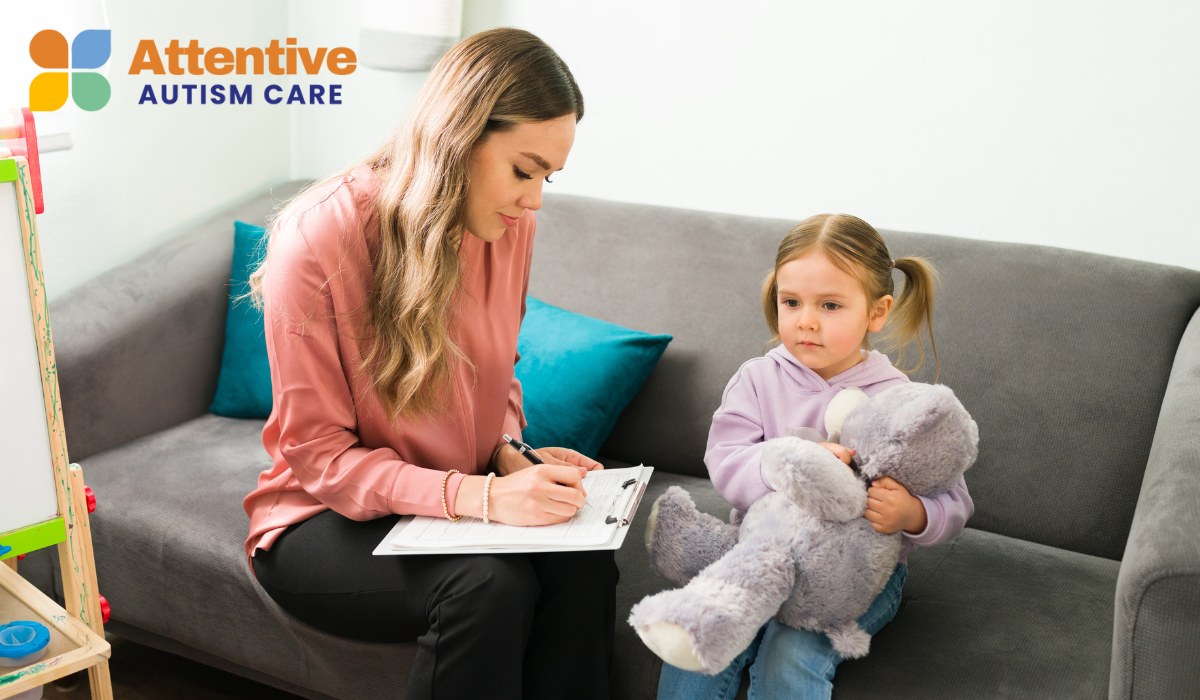
How ADOS Works: Step-by-Step
Many parents find comfort in knowing exactly what happens during the assessment. While the structure can vary slightly, most ADOS sessions follow a similar flow.
Here’s what you can generally expect during the process:
1. Initial Background and Setup
Before the session begins, the clinician will review your child’s developmental history and any previous evaluations. This step ensures they choose the correct ADOS module — each one designed for a specific communication level:
- Module 1: For children who don’t yet use consistent speech.
- Module 2: For children using phrases or simple sentences.
- Module 3: For fluent children or young teens.
- Module 4: For verbally fluent teens and adults.
You might be present in the room (especially for younger children), or you may observe from behind a one-way mirror.
2. Engagement and Play-Based Activities
Next, the clinician begins a series of structured and semi-structured activities designed to elicit natural social and communication responses. These tasks could include:
- Asking your child to tell a story from a picture book.
- Pretend play with toy figures or props.
- Offering opportunities to share enjoyment or show something interesting.
- Encouraging conversation through fun or silly prompts.
Each activity is chosen carefully to reveal how your child communicates, manages transitions, and responds to social cues — without pressuring them.
3. Observation and Scoring
Throughout the session, the examiner takes detailed notes on specific behaviors, such as:
- Eye contact and joint attention
- Use of gestures or pointing
- Response to name or shared attention
- Tone, pitch, and rhythm of speech
- Repetitive or restricted interests
Every behavior is scored using a standardized coding system, which later helps determine whether the child’s profile aligns with patterns typical of autism spectrum disorder.
4. Feedback and Next Steps
After the session, the clinician scores the ADOS and integrates those results with other findings. You’ll usually receive feedback in a separate appointment, where the results are explained in plain language.
This discussion often includes:
- A summary of observed behaviors.
- Whether those patterns meet ASD diagnostic criteria.
- Recommendations for therapy, early intervention, or school support.
If the results indicate autism, many clinicians suggest starting ABA therapy — a proven, evidence-based approach to teaching communication, adaptive skills, and social interaction.
What to Expect as a Parent
The ADOS can feel intimidating at first, but most parents describe it as less clinical and more interactive than they expected. Understanding what’s ahead can make it easier for you and your child.
Here’s what you can anticipate:
- A Comfortable Setting: The session often takes place in a quiet, child-friendly room. Toys, games, and books are used to make the experience relaxed and engaging.
- An Observer Role for You: Depending on the child’s age, parents may be in the room but are encouraged to let the clinician lead interactions.
- No “Right” or “Wrong” Answers: The focus isn’t on performance. The clinician wants to see natural behaviors, not rehearsed responses.
- Emotionally Mixed Reactions: Some parents feel relief seeing their child engage naturally, while others feel anxious awaiting results. Both reactions are completely normal.
Remember, the goal of ADOS isn’t to label — it’s to understand your child more deeply, guiding next steps for personalized support.
How Long Does the ADOS Take?
Most ADOS sessions last 30 to 60 minutes, depending on the module and your child’s responsiveness. However, the entire process — including feedback and discussion — may take a couple of hours.
You won’t receive results immediately, since scoring and interpretation require careful analysis. A follow-up appointment ensures you fully understand the findings and have a clear action plan.
Common Misconceptions About ADOS
Before your appointment, you might encounter conflicting information online. Let’s clear up a few common myths:
Myth 1: ADOS alone diagnoses autism.
ADOS is one part of a larger evaluation. Clinicians also consider developmental history, parent interviews, and observations from multiple settings.
Myth 2: It’s stressful for children.
Most children enjoy the session because it feels like playtime. Skilled clinicians are trained to keep interactions comfortable and positive.
Myth 3: It’s only for young children.
ADOS modules exist for all ages — including adults — to identify communication and social patterns across the lifespan.
Myth 4: The results never change.
As children grow and develop, their social and communication skills evolve. Follow-up assessments can reflect progress, especially when therapies like ABA are consistently applied.

How ADOS Results Inform Intervention
Once your child’s ADOS results are integrated into their diagnostic report, you’ll receive specific recommendations for support and therapy. This often includes referrals for:
- Speech and language therapy for communication development.
- Occupational therapy for sensory and motor skill integration.
- ABA therapy for behavioral and learning support.
Among these, Applied Behavior Analysis (ABA) stands out as one of the most effective, evidence-based approaches for children diagnosed with autism. It builds skills in communication, social interaction, and daily living — often using insights drawn directly from assessments like ADOS.
At Attentive Autism Care, we help families bridge the gap between diagnosis and progress. Our ABA programs are personalized, compassionate, and designed to meet each child where they are — building meaningful growth step by step.
Preparing Your Child for the ADOS
There’s no formal preparation needed, but you can help your child feel at ease:
- Talk About the Visit: Describe it as a play session or “meeting a new friend.”
- Avoid Coaching: Let behaviors unfold naturally so results reflect your child’s true communication style.
- Bring Comfort Items: Familiar toys or small comfort objects can help your child relax.
- Arrive Early: Give your child time to settle into the environment.
The more comfortable your child feels, the more accurate and informative the observation will be.

Supporting Your Child Beyond the Diagnosis
A diagnosis isn’t the end of the journey — it’s the beginning of understanding your child’s unique needs. The information gathered from the ADOS helps guide the right combination of therapies, educational supports, and home strategies.
ABA therapy, in particular, turns assessment insights into actionable growth. By focusing on small, measurable goals, it helps children develop communication, play, and independence skills — all while empowering parents to play an active role in their progress.
Bringing It All Together
The Autism Diagnostic Observation Schedule (ADOS) is more than just an evaluation — it’s a tool that brings clarity and direction to families seeking answers. It captures what makes your child unique and helps outline the best path forward for their development.
If your child is undergoing an autism assessment, remember: the ADOS is designed to observe, not judge, and its goal is to guide you toward effective, personalized support.
At Attentive Autism Care, we use the insights from assessments like ADOS to create individualized ABA therapy programs that help children thrive — socially, emotionally, and behaviorally. Whether you’re seeking ABA therapy in Maryland, Colorado, Utah, North Carolina, New Mexico, or Nebraska, our team is here to support your family with evidence-based care and heartfelt guidance.
Contact us today to learn how ABA therapy can help your child build lasting skills and confidence.


